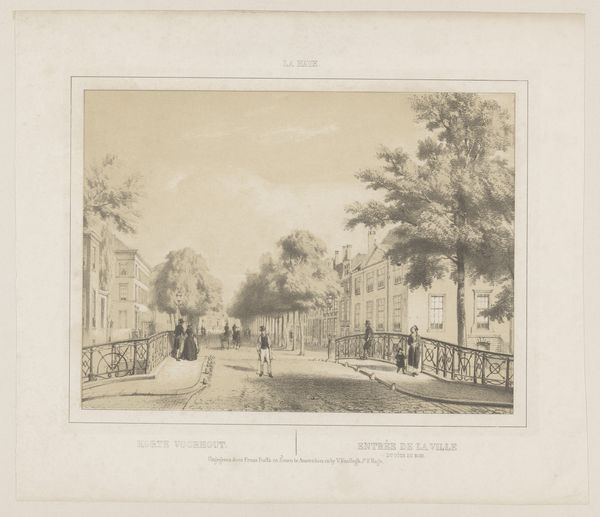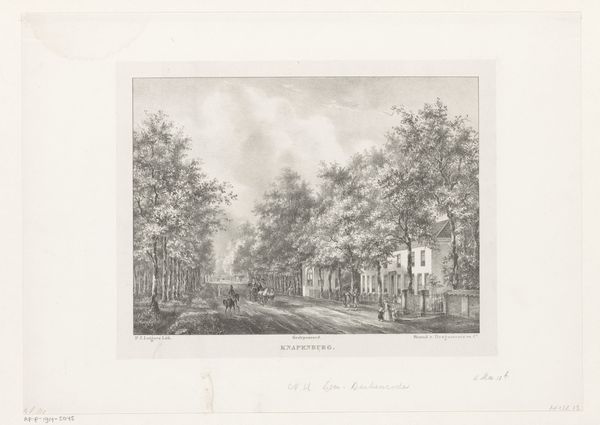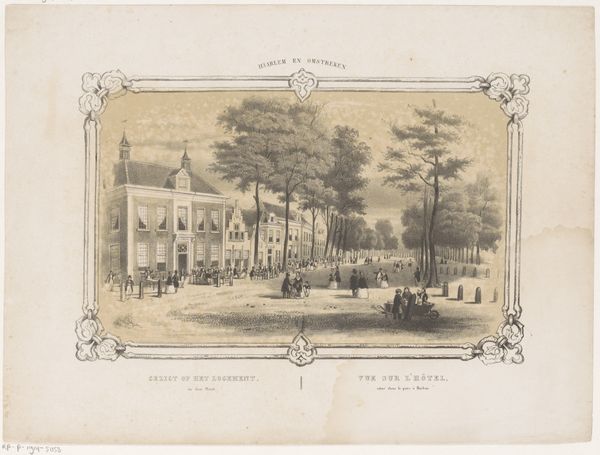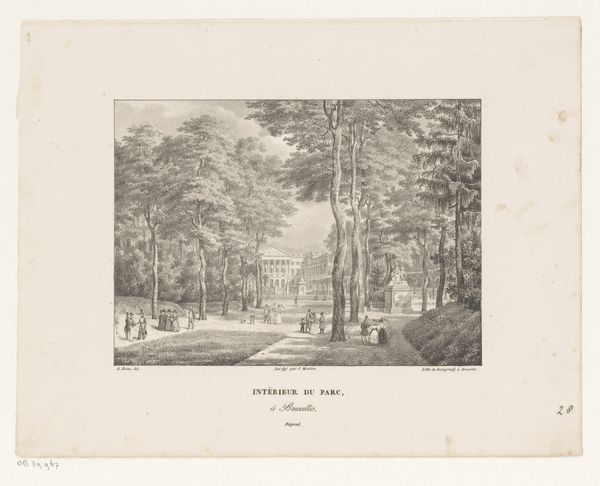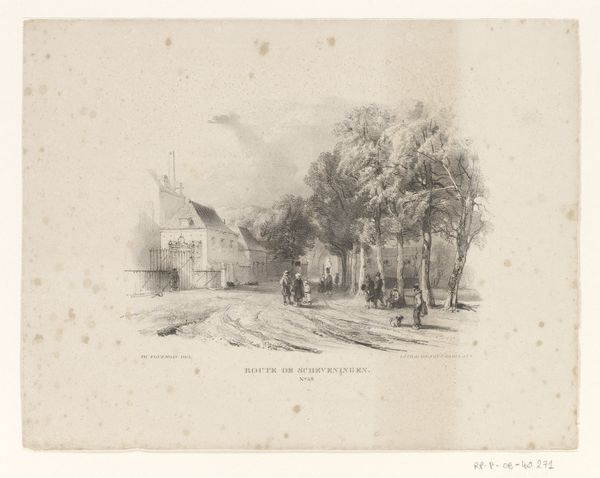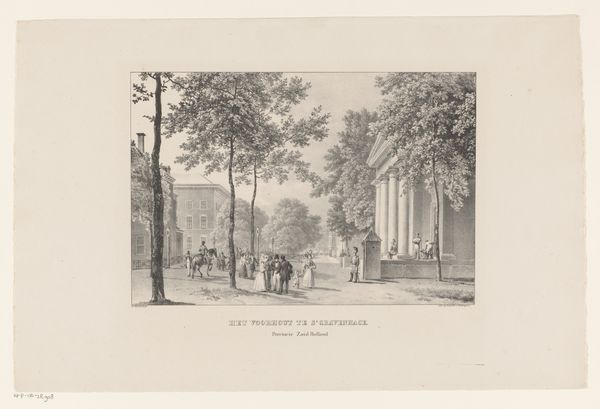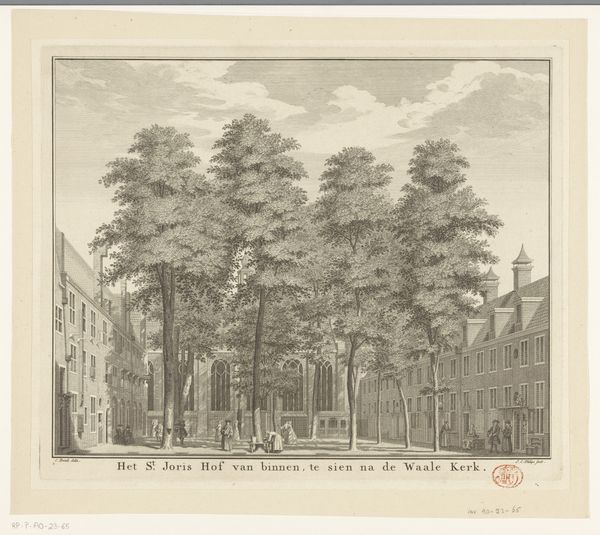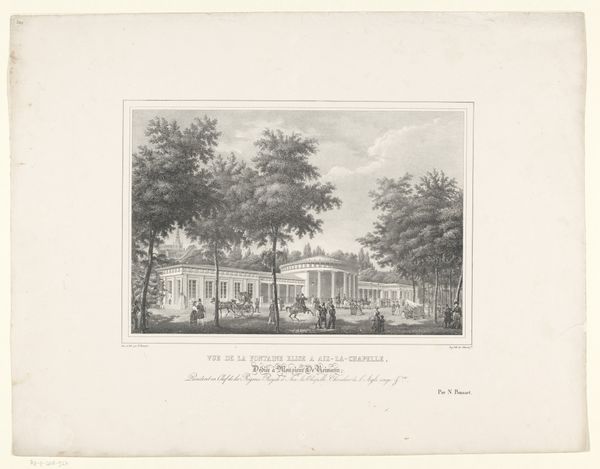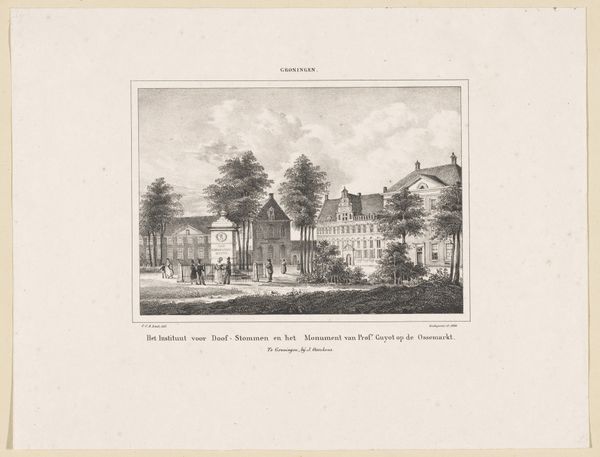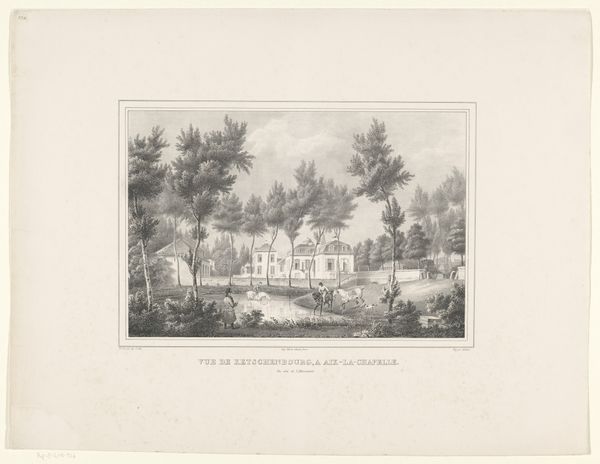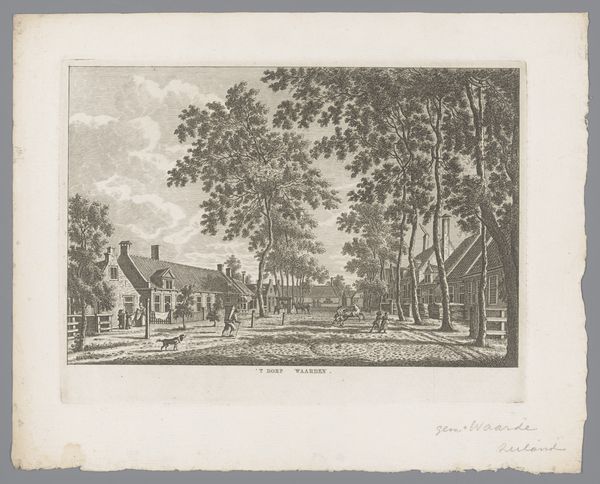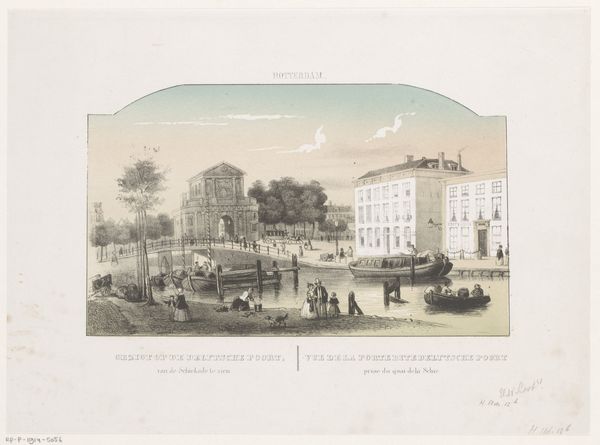
drawing, print, etching, engraving
#
drawing
# print
#
etching
#
landscape
#
romanticism
#
cityscape
#
engraving
Dimensions: height 245 mm, width 303 mm
Copyright: Rijks Museum: Open Domain
Editor: So, here we have "Gezicht op de Grote Houtbrug te Haarlem," a cityscape created by Johannes Reekers between 1826 and 1833, made of etching and engraving. The scene feels quiet, almost staged. What's your read on this work? Curator: The stillness is key, isn't it? While seemingly a straightforward depiction, these cityscapes, particularly during the Romantic period, weren't merely about documentation. They were carefully constructed images promoting a particular vision of the city and its civic life. Look at the figures - are they realistically rendered or more like symbolic placements? Editor: Now that you mention it, they seem a bit…arranged? Almost like props in a play. Curator: Exactly. This print would have circulated among a growing middle class, fostering a sense of local pride and investment in the city’s image. Notice how the bridge is not just a structure but a gateway. What is it a gateway to, do you think? Editor: Perhaps a gateway to commerce, progress, or even a sort of idealized civic harmony? I guess I just assumed it was a realistic depiction of Haarlem, but there is so much more going on beneath the surface! Curator: Precisely. The composition and even the print medium itself were chosen to convey particular values and project an image of order and prosperity. It is an intriguing artifact reflecting social values. Editor: This makes me look at cityscapes completely differently. Now I’m wondering who funded these projects and who was left out of this 'ideal' representation. Curator: The key question indeed. Always consider whose stories are being told, and more importantly, whose aren't. Editor: Fascinating. Thanks, that gave me a lot to consider. Curator: My pleasure. It’s been great thinking through it with you.
Comments
No comments
Be the first to comment and join the conversation on the ultimate creative platform.
